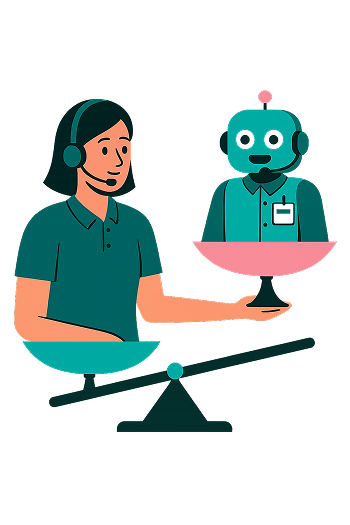(This is a guest post from Ines van Dijk, Interaction Quality Specialist with Quality in Support)
If the COVID pandemic taught us anything, it’s that human connection is important. We want to be seen, heard, and understood by the people we talk to, especially when we encounter issues we can’t resolve ourselves. Suppose you combine this knowledge with the understanding that the only people your customers will likely ever speak to are those in Customer Support or Success. In that case, you’ll realize why Customer-Led Growth strategies are becoming so important.
Pre-COVID, SaaS companies in particular relied on Product-Led Growth approaches. Customer Support was typically seen as a cost center rather than an essential part of retaining customers. Now that customers are more selective with where they spend their money, investing in the quality of your Customer Support team makes all the difference. But how do you know what your team needs to succeed, and how do you find information on what your customers want?
To make Customer-Led Growth work for your organization, you need a deep understanding of what your customers actually want from you:
- How they wish to be spoken to
- What they want from your product(s)
- How they wish to engage with you when they run into problems
CSAT has historically been used to identify the answers to the above questions. And while we absolutely do want to hear directly from customers about their opinions, the CSAT survey usually doesn’t provide that feedback accurately. Customers, like everyone else, are inherently biased. Their feedback will be subjective when they remember their conversation with the Support team. It’s a KPI that relies on outside factors (the customers’ recollection of the experience) and should not solely be used as a benchmark for quality.
What Does Quality Look Like?
So, how do we determine what quality looks like? This is where Quality Assessment comes in. It is a way to measure the qualitative results of a Customer Support team objectively. Defining what ‘quality’ looks like on a quantitative level is tricky and easy to get wrong if not done properly. Where most companies fail to implement a QA strategy that works, you can blow your competition out of the water if you do it right.
Because QA is so reliant on objective data collection, it is comparable to the Intelligence industry – think spies and covert operators. QA in the Support industry may not be as exciting as what James Bond gets to do. Still, the end goal is the same: collect evidence about the status of your objective, and present that information to the appropriate stakeholders. They can then use that information to pivot where they need to.
In both Intelligence and Customer Support, the name of the game is objectivity—the less bias creeps in, the more precise the image you can present to your stakeholders. The less a term such as ‘quality’ is up to the reviewer to interpret, the fairer the assessment will be, and the more realistic the path to resolving problems will be.
Before the introduction of AI within the QA space, reviewing conversations was a manual task. The bigger the volume of conversations the Support team does, the more work a QA Specialist would have to do. The more manual processing of data a single individual has to do, the bigger the chance that bias and mistakes get introduced into the process.
Bringing AI to QA
When using a tool such as Loris, that situation changes drastically. With the ability to investigate 100% of your Support team’s work, you remove bias from the initial process of gathering and analyzing data. It helps you bypass the hurdles that cause most QA programs to fail. You get a better overview of how the team is actually performing while allowing human intervention to understand the subtleties of communication.
Because an AI is also faster in that analysis than the average QA Specialist would be if they were doing the same work manually, implementing changes can be done much quicker, more cost-effective, and with better results. Compared to a competitor that does not have a QA program, your company will rapidly start outpacing them in terms of customer loyalty. Customers want to be understood without explaining what they need in detail. QA allows you to do just that.
But that’s not all. Because of the limited amount of work that can be done manually, Quality Assessment has typically been used to check individual agent performance. It helps team leads and HR understand how agents are doing and what adjustments they might need. This is a reactive practice, and while still vital to the proper functioning of your team, it is not all Quality Assessment can do for you once the bulk of the work is automated.
Think of the QA team or program as a bridging tool between the different divisions within your organization. It can give Product a much deeper insight into what customers need. Marketing can use communication analysis information to improve the wording of the ads they create. Sales gains insight into which pain points are best addressed in the initial conversation with a prospective customer.
Quality Assessment lets you utilize the full extent of the information your Customer Support team holds. In the era of Customer-Led Growth, having the opportunity to make data-driven decisions just makes sense. Where your competition is still guessing and using CSAT to base important decisions, you can create powerful, informed changes.
A QA program that is well thought out and supported by Loris gives you a leg up in a world where customers are no longer surprised by Support excellence – they are expecting it. Companies that recognize this trend and move to change with the times will see better results (less churn and better relationships with customers) in 2023 than companies that do not.
Interested in trying out how Loris can help your team have better conversations? Click here to connect with our team.

